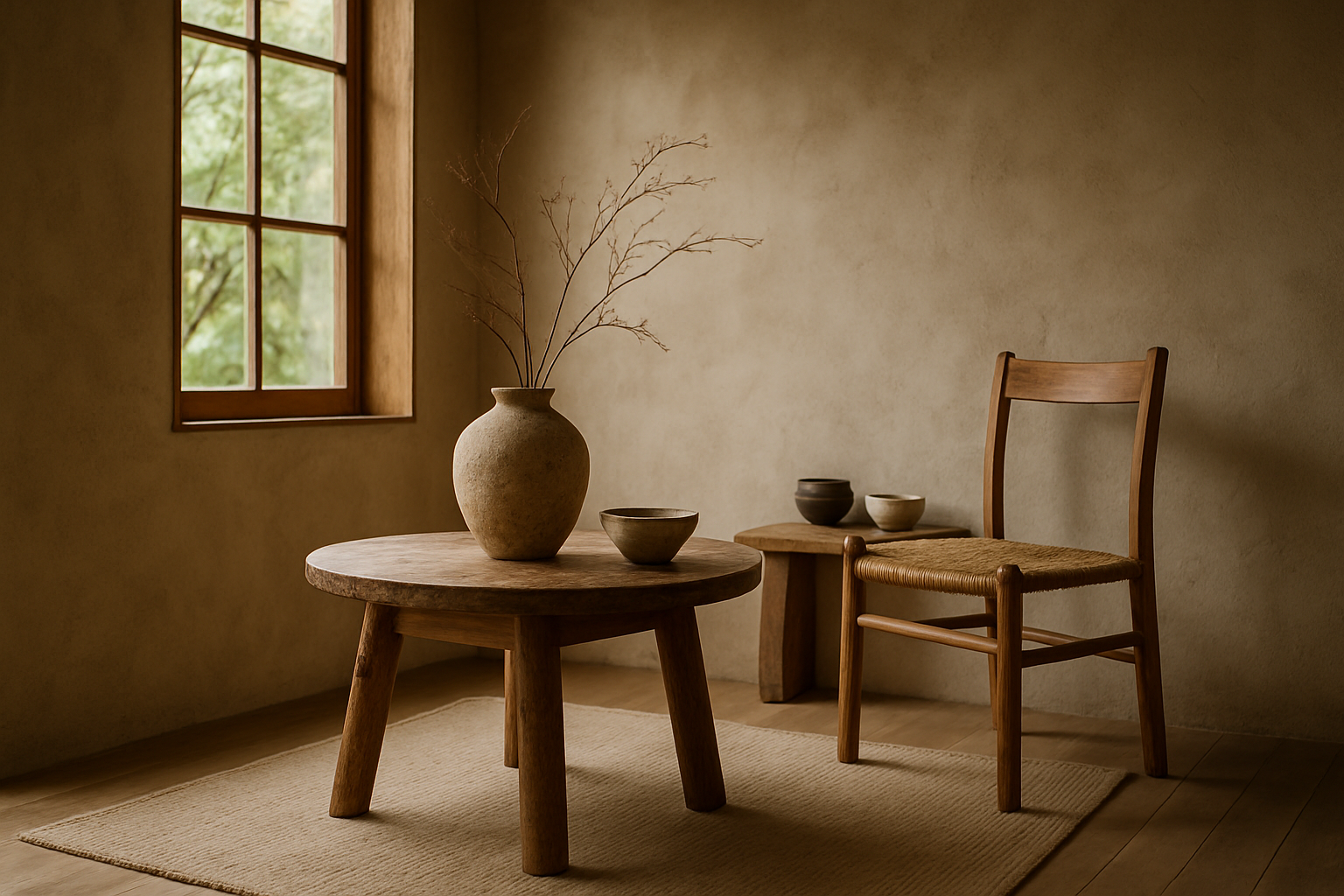The Unexpected Charm of Wabi-Sabi in Western Interiors
In a world obsessed with perfection, a quiet revolution is taking place in Western homes. The ancient Japanese aesthetic of wabi-sabi, with its emphasis on imperfection and transience, is finding its way into modern interior design. This unexpected fusion of Eastern philosophy and Western decor is reshaping how we view beauty in our living spaces, offering a refreshing antidote to the polished facades of contemporary design.

Origins and Philosophy of Wabi-Sabi
The concept of wabi-sabi originated in 16th century Japan as a reaction to the prevailing aesthetic of ornate, ostentatious, and perfect beauty. Wabi originally referred to the loneliness of living in nature, away from society, while sabi meant withered or lean. Over time, these ideas merged to form a unified philosophy that finds beauty in simplicity, naturalness, and the imperfect.
In traditional Japanese culture, wabi-sabi manifested in the rustic simplicity of tea houses, the asymmetry of flower arrangements, and the visible repairs in broken pottery. It’s an aesthetic that values patina over polish, weathered wood over veneers, and handmade objects over mass-produced goods.
Wabi-Sabi Meets Western Design
The introduction of wabi-sabi into Western interiors represents a significant shift from the sleek, minimalist designs that have dominated in recent years. Instead of hiding flaws, wabi-sabi celebrates them. Cracked leather sofas, weathered wood tables, and handmade ceramics with visible imperfections are now sought-after pieces that add character and depth to living spaces.
This aesthetic isn’t about neglect or shabbiness; rather, it’s about appreciating the natural lifecycle of materials and the stories they tell. A scratched wooden floor speaks of children playing, while a patinated copper vase reflects years of use and care. These imperfections create a lived-in atmosphere that many find comforting and authentic.
Key Elements of Wabi-Sabi in Home Decor
Incorporating wabi-sabi into Western homes involves several key elements:
-
Natural Materials: Emphasis on raw, unprocessed materials like wood, stone, and clay. These materials age gracefully, developing unique patinas over time.
-
Muted Color Palette: Soft, earthy tones that reflect nature. Think mossy greens, sandy beiges, and stormy grays.
-
Handcrafted Objects: Artisanal pieces that show the hand of the maker, complete with slight irregularities that make each item unique.
-
Simplicity: Clutter-free spaces that allow each object to breathe and be appreciated for its inherent qualities.
-
Organic Forms: Irregular shapes and asymmetrical designs that mimic nature’s imperfect beauty.
Practical Applications in Western Homes
Integrating wabi-sabi into Western interiors doesn’t require a complete overhaul. Small changes can have a significant impact:
-
Textiles: Introduce natural fabrics like linen or raw cotton, embracing their tendency to wrinkle and fade over time.
-
Furniture: Choose pieces made from reclaimed wood or those with visible grain and knots. Allow leather furniture to develop a natural patina rather than treating it to maintain a pristine appearance.
-
Ceramics: Opt for handmade pottery with slight irregularities in shape or glaze. Consider the Japanese art of kintsugi, which repairs broken pottery with gold, highlighting rather than hiding the damage.
-
Plants: Incorporate plants in various stages of growth, including those with imperfect leaves or asymmetrical forms.
-
Lighting: Use soft, diffused lighting to create a calm atmosphere. Consider paper lanterns or fixtures made from natural materials like bamboo or rattan.
The Psychology of Wabi-Sabi Interiors
The appeal of wabi-sabi in Western homes goes beyond aesthetics. In a culture that often equates newness with value, embracing imperfection can be psychologically liberating. Wabi-sabi interiors encourage mindfulness and appreciation for the present moment, fostering a sense of calm and contentment.
Research suggests that living in spaces that reflect wabi-sabi principles can reduce stress and anxiety. The acceptance of imperfection in our surroundings can translate to greater self-acceptance and a more relaxed approach to life’s challenges.
Challenges and Considerations
While wabi-sabi offers a refreshing perspective on home design, it’s not without its challenges in a Western context. The fine line between artful aging and neglect can be difficult to navigate. Additionally, the Western market’s emphasis on trends and constant renewal can make it challenging to fully embrace the slow, natural aging process that wabi-sabi celebrates.
Designers and homeowners must also be cautious about cultural appropriation, ensuring that they understand and respect the philosophy behind wabi-sabi rather than simply adopting its aesthetic elements without context.
The Future of Wabi-Sabi in Western Design
As sustainability and mindfulness become increasingly important in Western culture, the principles of wabi-sabi are likely to gain further traction. This aesthetic aligns well with the growing interest in eco-friendly design, as it encourages the use of natural materials and the longevity of possessions.
Looking ahead, we may see a fusion of wabi-sabi with other design trends, creating new hybrid styles that balance Eastern philosophy with Western sensibilities. This could lead to innovative approaches in sustainable design, where the aging process of materials is not just accepted but actively incorporated into the design process from the outset.
The integration of wabi-sabi into Western interiors represents more than just a design trend; it’s a shift in perspective that encourages us to find beauty in the imperfect, value in the aged, and peace in simplicity. As we continue to navigate an increasingly complex world, the serene and grounding nature of wabi-sabi interiors offers a welcome respite, reminding us to appreciate the subtle beauty that surrounds us every day.





